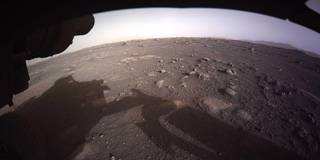The successful landing of NASA's Perseverance rover on Mars is about far more than scientific curiosity or national prestige. For the sake of humanity's long-term survival, it is imperative that we embrace our technological know-how to establish life beyond planet Earth.
NEW YORK – The Perseverance rover, which landed on Mars this month, marks a new leap toward answering fundamental questions about our solar system, including where else we might find DNA. The rover will roam the surface of Mars looking for signs of life, make its own oxygen, launch a helicopter, and collect soil and rocks for a follow-up mission in 2028. If all goes as planned, NASA, with the help of European Space Agency (ESA) spacecraft, will return soil samples in the spring of 2032 – the first Martian material to visit Earth.
Finding DNA on Mars would not be a complete surprise. Though Perseverance was constructed in the Spacecraft Assembly Facility (SAF) clean room at NASA’s Jet Propulsion Laboratory (JPL), even that setting cannot be made 100% free of background microbial or human DNA. We have known about “microbial hitchhikers” since the very first interplanetary missions in the 1960s, when scientists such as Carl Sagan highlighted the problem. It is a persistent, unavoidable risk of space science. Because scientists must build the spacecraft one layer at a time, shedding skin and droplets of saliva over years of construction, it is almost certain that a little bit of California DNA just landed on Mars.
As such, when the samples arrive on Earth in 2032, they will need to go through a “planetary-scale genetic filter” to rule out any DNA that might have been present in the SAF during the rover’s construction from 2015-20, as well as any other fragment of DNA observed on Earth up until the launch of the spacecraft in July 2020. This is an ongoing project between our laboratory at Weill Cornell Medicine and JPL. By sequencing the DNA found in, around, and on the SAF during the construction of robots, we will draw up a genetic map to avoid or minimize any forward or backward contamination (where we send genetic material somewhere else, or genetic material from somewhere else lands here).

NEW YORK – The Perseverance rover, which landed on Mars this month, marks a new leap toward answering fundamental questions about our solar system, including where else we might find DNA. The rover will roam the surface of Mars looking for signs of life, make its own oxygen, launch a helicopter, and collect soil and rocks for a follow-up mission in 2028. If all goes as planned, NASA, with the help of European Space Agency (ESA) spacecraft, will return soil samples in the spring of 2032 – the first Martian material to visit Earth.
Finding DNA on Mars would not be a complete surprise. Though Perseverance was constructed in the Spacecraft Assembly Facility (SAF) clean room at NASA’s Jet Propulsion Laboratory (JPL), even that setting cannot be made 100% free of background microbial or human DNA. We have known about “microbial hitchhikers” since the very first interplanetary missions in the 1960s, when scientists such as Carl Sagan highlighted the problem. It is a persistent, unavoidable risk of space science. Because scientists must build the spacecraft one layer at a time, shedding skin and droplets of saliva over years of construction, it is almost certain that a little bit of California DNA just landed on Mars.
As such, when the samples arrive on Earth in 2032, they will need to go through a “planetary-scale genetic filter” to rule out any DNA that might have been present in the SAF during the rover’s construction from 2015-20, as well as any other fragment of DNA observed on Earth up until the launch of the spacecraft in July 2020. This is an ongoing project between our laboratory at Weill Cornell Medicine and JPL. By sequencing the DNA found in, around, and on the SAF during the construction of robots, we will draw up a genetic map to avoid or minimize any forward or backward contamination (where we send genetic material somewhere else, or genetic material from somewhere else lands here).